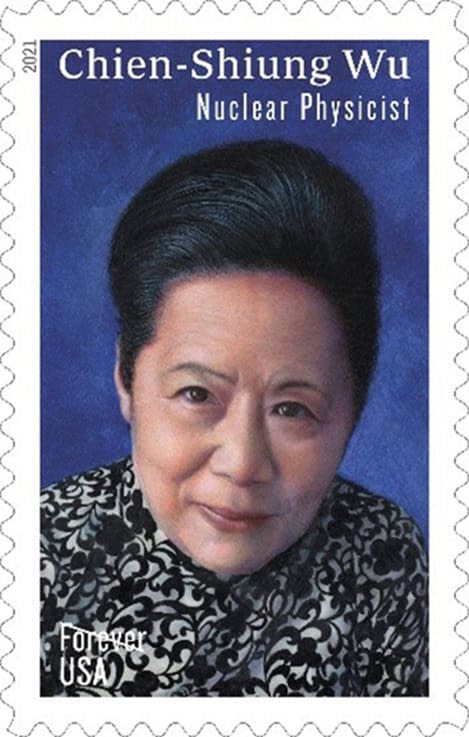New postage stamp honors trailblazing 'First Lady of Physics'
The U.S. Postal Service on Thursday unveiled a new postage stamp honoring Chien-Shiung Wu, a trailblazing Chinese American nuclear physicist whose myriad accomplishments earned her the nickname "the First Lady of Physics."
The stamp's release was timed to coincide with the International Day of Women and Girls in Science, an annual event that was established by the United Nations General Assembly in 2015 to celebrate female scientists and promote equal access for women and girls in science and technology.

Kristin Seaver, executive vice president of the Postal Service, called Wu "one of the most influential nuclear physicists of the 20th century."
Wu "made enormous contributions to our understanding of radioactivity and the structure of the universe," Seaver said Thursday in a taped virtual ceremony to mark the stamp's first day of issue.
Wu was born in China in 1912 and moved to the United States at the age of 24. She received a doctorate from the University of California, Berkeley.
Wu is best known for her experiments in the 1950s on a quirky but fundamental property in physics known as parity symmetry. Physicists at the time thought that processes in the real world — basic interactions such as electromagnetism, for instance — should be indistinguishable when those same processes are viewed in a mirror. In other words, while a mirror may interchange left and right, it was thought that nature did not distinguish between the two.
But Wu's research in 1956 with two theoretical physicists, Tsung-Dao Lee and Chen Ning Yang, found that when some radioactive particles decay, they defied parity symmetry.
The discovery was made using a sample of cobalt-60, a radioactive form of cobalt, which emits particles that spin either in a left direction or a right direction as it decays.
"She showed that the mirror image of the decay process that was happening in the laboratory could never happen in the real world," Brian Greene, a professor of physics and mathematics at Columbia University, said during Thursday's ceremony.
"That established that this left-right symmetry that we thought was just a convention — the universe doesn’t care about left or right — she showed that the universe does care about left and right," Greene said, adding that the breakthrough, "pushed the boundaries of understanding in a profound way."
Lee and Yang were awarded the 1957 Nobel Prize in Physics for the discovery, but not Wu. Many felt her contributions were unfairly overlooked, particularly because the groundbreaking research had been known as the "Wu experiment."
Prior to her work on parity violation, Wu assisted with the Manhattan Project, experimenting with uranium enrichment during World War II. Later in her career, she studied molecular changes in red blood cells that helped answer crucial questions about sickle cell disease.
Wu, who spent most of her career at Columbia University, was also an advocate for women in science and academia.
"She would always mention that the number of women in senior faculty member positions was very limited. She thought that was not fair," said Vincent Yuan, her son, a nuclear physicist at Los Alamos National Laboratory. "She thought it was terrible that women couldn't have necessarily the same ambitions and hopes that men could, if those opportunities were limited."
Wu's accomplishments over her 40-year career helped pave the way for subsequent generations of female scientists in a field that was, and still is, dominated by men. She retired from Columbia University in 1981, and died in New York City in 1997 at the age of 84.
The new postage stamp was designed by Ethel Kessler, with original art by Kam Mak. The portrait features Wu in a black-and-white, high-collared traditional Chinese gown.
With the release of the stamp, Wu joins an elite club of scientists who have received such honor from the Postal Service. Other scientists who have had their likenesses emblazoned on stamps include the physicists Albert Einstein and Richard Feynman, the geneticist Barbara McClintock, the astronomer Edwin Hubble and the theoretical physicist Maria Goeppert Mayer.
Anyone can be nominated to appear on a commemorative stamp, and the Postal Service receives tens of thousands of submissions every year. Applications are reviewed by the Citizens’ Stamp Advisory Committee, which then submits recommendations to the Postmaster General.
